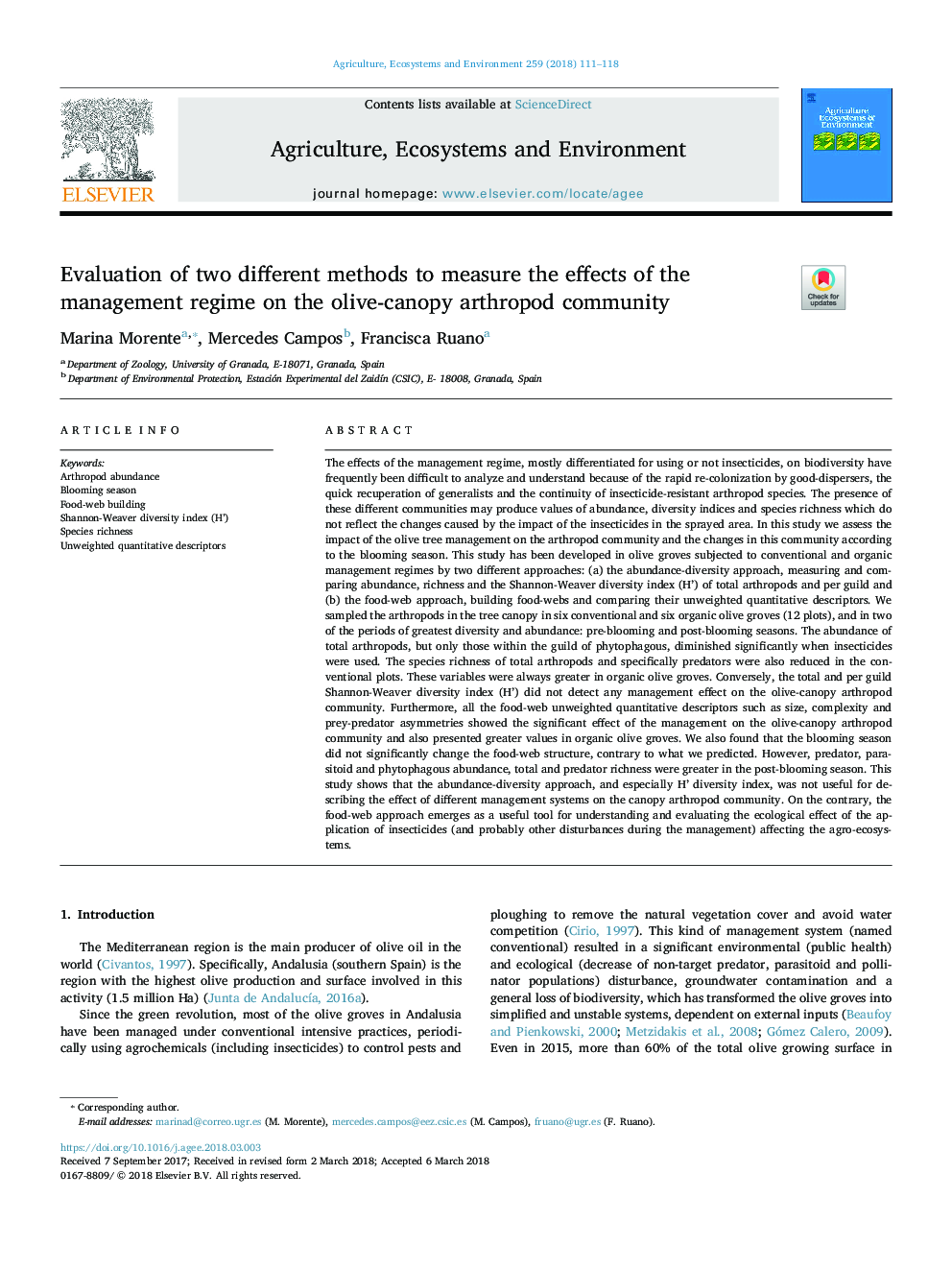| کد مقاله | کد نشریه | سال انتشار | مقاله انگلیسی | نسخه تمام متن |
|---|---|---|---|---|
| 8487100 | 1551993 | 2018 | 8 صفحه PDF | دانلود رایگان |
عنوان انگلیسی مقاله ISI
Evaluation of two different methods to measure the effects of the management regime on the olive-canopy arthropod community
ترجمه فارسی عنوان
ارزیابی دو روش مختلف برای اندازه گیری اثرات رژیم مدیریتی بر روی جامعه شهری زراعی زراعتی
دانلود مقاله + سفارش ترجمه
دانلود مقاله ISI انگلیسی
رایگان برای ایرانیان
کلمات کلیدی
موضوعات مرتبط
علوم زیستی و بیوفناوری
علوم کشاورزی و بیولوژیک
علوم زراعت و اصلاح نباتات
چکیده انگلیسی
The effects of the management regime, mostly differentiated for using or not insecticides, on biodiversity have frequently been difficult to analyze and understand because of the rapid re-colonization by good-dispersers, the quick recuperation of generalists and the continuity of insecticide-resistant arthropod species. The presence of these different communities may produce values of abundance, diversity indices and species richness which do not reflect the changes caused by the impact of the insecticides in the sprayed area. In this study we assess the impact of the olive tree management on the arthropod community and the changes in this community according to the blooming season. This study has been developed in olive groves subjected to conventional and organic management regimes by two different approaches: (a) the abundance-diversity approach, measuring and comparing abundance, richness and the Shannon-Weaver diversity index (H') of total arthropods and per guild and (b) the food-web approach, building food-webs and comparing their unweighted quantitative descriptors. We sampled the arthropods in the tree canopy in six conventional and six organic olive groves (12 plots), and in two of the periods of greatest diversity and abundance: pre-blooming and post-blooming seasons. The abundance of total arthropods, but only those within the guild of phytophagous, diminished significantly when insecticides were used. The species richness of total arthropods and specifically predators were also reduced in the conventional plots. These variables were always greater in organic olive groves. Conversely, the total and per guild Shannon-Weaver diversity index (H') did not detect any management effect on the olive-canopy arthropod community. Furthermore, all the food-web unweighted quantitative descriptors such as size, complexity and prey-predator asymmetries showed the significant effect of the management on the olive-canopy arthropod community and also presented greater values in organic olive groves. We also found that the blooming season did not significantly change the food-web structure, contrary to what we predicted. However, predator, parasitoid and phytophagous abundance, total and predator richness were greater in the post-blooming season. This study shows that the abundance-diversity approach, and especially H' diversity index, was not useful for describing the effect of different management systems on the canopy arthropod community. On the contrary, the food-web approach emerges as a useful tool for understanding and evaluating the ecological effect of the application of insecticides (and probably other disturbances during the management) affecting the agro-ecosystems.
ناشر
Database: Elsevier - ScienceDirect (ساینس دایرکت)
Journal: Agriculture, Ecosystems & Environment - Volume 259, 1 May 2018, Pages 111-118
Journal: Agriculture, Ecosystems & Environment - Volume 259, 1 May 2018, Pages 111-118
نویسندگان
Marina Morente, Mercedes Campos, Francisca Ruano,
